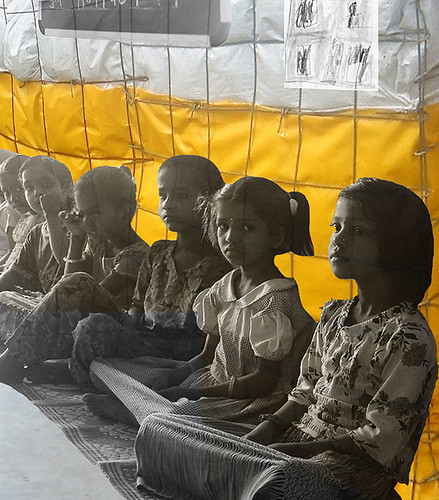Student artists and designers use their talents to help communities in need around the world through the International Design Clinic.

Three billion people in the world currently live on less than $2.50 a day, and 1.2 billion people earn less than $1 a day.
A Temple professor, along with groups of students, is working to help destitute communities around the world.
The International Design Clinic is a not-for-profit organization that provides students, artists and designers the opportunity to use their talents to construct projects for communities around the world. The IDC was founded in 2006 by Temple professor and architect Scott Shall.
“I was inspired by the drive of Temple University students to start the IDC,” Shall said.
The IDC developed more than a dozen projects across three continents and is preparing to work in Bolivia this summer.
The six-week study-abroad experience focuses on collaboratively working with others and creating innovative projects that help the community. During the first two weeks, the program’s 16 students evaluate and assess the needs of a community and evaluate their own personal talents to create a project.
Shall said students independently create their own projects and begin working closely with other students, professors, professionals and locals to accomplish their goals.
The IDC has worked in India, Romania and the United States, including projects in Philadelphia and Louisiana. Some projects created include a water filter, an urban tent for the homeless and a playground for abandoned children.
“The stuff we build is very small but well-crafted,” Shall said, adding that the work is supposed to be “regenerative” – and could potentially be a catalyst for long-term change.
A group of students, professors and professionals will spend six weeks in Bolivia this summer working to help meet the needs of the local community of La Paz. The study-abroad experience combines a wide range of people and talents.
“When I first started the IDC, it was for architects,” Shall said. But other students began contacting him in 2006 to express their interest in the study-abroad program.
The diverse range of interest gave Shall the idea to expand the project into a wider collaborative effort. He said diversity helps each group think outside the box and utilize the resources available.
The organization is built on the idea of collaboratively working among different people to accomplish a common goal, he said. Students involved in the program have backgrounds in arts education, industrial design, film, business strategies, urban geography and Latin American studies.
Shall said it’s the job of the students to go into a foreign place humbly and with an open mind. Second, it is the group’s goal to figure out their limits and potential. The first two weeks of the six-week missions are spent familiarizing themselves with the culture.
“We are left to become part of the culture,” fifth-year architecture student Sarah Salem said. “India was an opportunity to see what the native people are going through.”
When they first arrive in their location, students are challenged to participate in scavenger hunts and creative development exercises like creating artwork from trash found on the streets. Shall said it is imperative for students to immerse themselves in the culture and to rethink new design strategies.
“Our work is not based on isolating oneself, and it’s not about comfortably hiding yourself in a hotel room. It’s immersive,” he said.
“Many people think that the biggest challenge is overcoming the language barrier,” Shall said. “[But] the work becomes an object of knowledge, and you communicate through the work.”
Shall is looking for people who are not afraid to creatively reapply what they have learned. The IDC needs to continually develop partnerships with existing aid and humanitarian organizations, according to the program’s Web site.
Shall is teaching a class in the Spring 2010 semester called “guerilla altruism.” The IDC is participating in the Spring Small Architecture, Big Landscapes at the Sheldon Swope Museum in Indiana.
Salem said the program helped her adapt to different types of design, and to the needs of their clients. She commented that the IDC helps students use their talents to help humanity.
Andy Whitlatch can be reached at andywhitlatch@temple.edu.



Be the first to comment